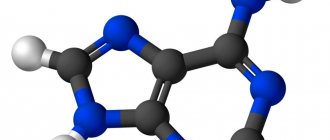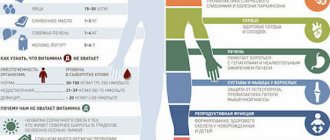December 18, 2021 October 26, 2021
The importance of vitamin D for the body cannot be overestimated. It is responsible for a number of important biochemical processes:
- helps the absorption of calcium and phosphorus, “opening” the cells of bone tissue, teeth and nails to receive these minerals;
- normalizes blood sugar levels;
- speeds up metabolism;
- synthesizes monocytes, which purify the blood;
- stimulates the synthesis of a number of hormones;
- improves the transmission of impulses between neurons;
- affects the development of the embryo.
With proper consumption of vitamin D, bones and muscles are strengthened, blood composition is improved, dry hair and skin disappears, the risk of the appearance and development of oncology and diabetes is reduced, immunity, efficiency, and concentration are increased, the functioning of the thyroid gland and heart is improved, and blood pressure is regulated.
Types of Vitamin D
Vitamin D, or calciferol, is the general name for a group of biologically active substances - fat-soluble vitamins D1, D2, D3, D4, D5, D6. Two of them are beneficial for human health:
- ergocalciferol (vitamin D2) and
- cholecalciferol (vitamin D3).
Ergocalciferol enters the body from the outside - along with plant foods (juices, grains, mushrooms). But cholecalciferol is synthesized by the body itself under the influence of ultraviolet radiation. This is why it is also called a “natural” vitamin. In addition, it is found in foods of animal origin - fatty fish, yolks, butter, etc. According to scientific research, D3 is approximately 30% more active in human life, which means that this particular type of calciferol is especially useful.
VITAMIN D DEFICIENCY: SYMPTOMS, CONSEQUENCES, TREATMENT
The statistics are not encouraging: about 90% of people around the world are deficient in vitamin D. Doctors around the world take this vitamin deficiency seriously. And vitamin D preparations are undeniable helpers in this matter.
Vitamin D has been researched for over 100 years. Initially, the effect of this vitamin on the condition of the skeleton (the so-called bone function) was considered, but in the last 30 years the attention of scientists has been focused on the extraosseous functions of vitamin D. Let's first look at its classical indications.
Classic properties of vitamin D:
- Healthy bones and muscles. Vitamin D plays an important role in the absorption of calcium: it regulates calcium-phosphorus metabolism in the body, promotes growth, strengthening the skeleton, and proper mineralization of bone tissue. Therefore, for growth and proper development, doctors often prescribe vitamin D supplementation even for newborn children and adolescents during the period of active growth, in order to avoid improper bone development (rickets). In adulthood and old age, a lack of vitamin D can lead to softening of the bones (osteomalacia), and deficiency increases the risk of developing osteoporosis and fractures.
- Health and beauty of teeth. Without vitamin D, the formation of teeth is disrupted, they will be more fragile, and thinning of the enamel is provoked. Tooth decay develops more often in those who have a vitamin D deficiency.
In addition to the classical indications that we have known since childhood, vitamin D also has a lot of other properties, which doctors call neoclassical or extraosseous effects of vitamin D
Neoclassical indications for vitamin D:
- Immune activation: Reduces the risk of developing colds, flu, and autoimmune diseases. Tip: If you are tired of frequent colds, it makes sense to start taking vitamin D.
- Increases performance, concentration, memory and learning ability. Scientists have found that people with lower levels of vitamin D perform worse on exams, have more difficulty making decisions, and have difficulty completing tasks that require attention and concentration.
- Controlling blood sugar and preventing diabetes. Diabetes mellitus occurs due to the lack of insulin or insufficient secretion of insulin. Since calcium is necessary for the production of insulin, vitamin D helps maintain the secretion of this hormone.
- Cancer protection. Vitamin D deficiency is particularly associated with increased risks of breast, colon and prostate cancer.
- Helps fight cardiovascular diseases. Because this vitamin is involved in regulating blood pressure, cholesterol levels and inflammation.
- Helps regulate hormones and improve mood. Low vitamin D levels can also interfere with the proper production of testosterone and estrogen.
Who is at risk:
- People over 45 years old. With age, a person's metabolism slows down, which interferes with the independent synthesis of vitamin D from the sun and food.
- People with dark skin. Nature intended that dark skin blocks the synthesis of vitamin D. According to research, 90% of people with dark skin pigmentation suffer from a lack of vitamin D.
- People using creams with SPF protection. Almost all face and body creams contain SPF protection, which blocks the synthesis of vitamin D. The widespread and widespread use of UV protectors, even in northern countries, contributes to the development of vitamin D deficiency in the world. For example, using SPF 8 sunscreen reduces the body's ability to produce vitamin D by 90%. And the more common and doctor-recommended sunscreen with SPF 30 reduces this ability to 99%.
- Obesity and excess weight block vitamin D synthesis.
- A sedentary lifestyle puts most nutrients into a dormant state, incl. and vitamin D, and also slows down metabolism, which interferes with the independent synthesis of vitamin D from the sun and food.
- The predominance of plant foods in the human diet (excluding milk, liver, fatty fish and eggs) reduces the intake of vitamin D in the body.
- People of large industrial cities. The level of pollution in most large Russian cities is off the charts: industrial emissions and dust do not transmit the required spectrum of UV rays necessary for the synthesis of vitamin D.
Symptoms of Vitamin D Deficiency
A blood test will help you find out for sure whether you have a vitamin D deficiency. However, there are a number of symptoms indicating its deficiency:
- You feel constantly tired and lack of strength
- You suffer from frequent colds
- You are worried about absent-mindedness and inability to concentrate
- You regularly notice yourself in a bad mood for no apparent reason
- You are concerned about the deterioration of your hair, nails and skin
- Experiencing muscle fatigue or pain in bones and muscles
- Began to notice sweating of the scalp
If any of these concerns you, there is reason to wonder if you may already be developing a vitamin D deficiency.
What is vitamin D3?
Vitamin D3 (cholecalciferol) is a vital fat-soluble vitamin necessary to ensure the functioning of almost all organs and systems of the human body. It exists in a free form in nature, unlike other metabolites of vitamin D. Vitamin D3 is formed in human skin under the influence of sunlight. Compared to vitamin D2, it is characterized by 25% higher activity.
How does the sun help us produce vitamin D3?
Our bodies convert sunlight into chemicals that then become vitamin D3. Cholesterol in the skin converts "previtamin D" into the beneficial vitamin D3, which is sometimes also called provitamin D. Previtamin D first passes through the kidneys and liver through the bloodstream and is then converted into the biologically active compound calcitriol. To get the required amount of sun to produce the vitamin, you need to sunbathe every day for about an hour and at least 60% of the skin should be exposed. If there are few sunny days in your region, it is better not to get carried away with the solarium, since, according to doctors, regular exposure to such sources of UV radiation is even more dangerous in terms of cancer than solar UV radiation, because the skin of a white person is no longer sufficiently pigmented, to protect us from cancer. Therefore, most scientists rightly noted, do we want to expose our skin to such an amount of UV radiation, causing the risk of cancer?
Statistics show that modern people in urban environments are not able to spend enough time in the sun every day for the synthesis of vitamin D.
How to get vitamin D from food?
Known leading foods in terms of vitamin D content are fatty fish: tuna, mackerel, sardine, cod liver, catfish.
But there is an important nuance that affects the vitamin D content in these products. It turns out that vitamin D is lost during heat treatment. The modern food industry is not able to ensure the delivery of freshly caught fish to your table, since the duration of any logistics is forced to subject fresh products to deep freezing in order to deliver such fish catches to processing plants (for example, for the production of canned fish or cod liver) or to stores. In addition, we heat treat (cook hot food, to put it simply) any fish, thereby significantly reducing the vitamin D content in food.
Unfortunately, the listed products are frozen and then heat-treated, due to which vitamin D is lost in them. Moreover, these products are high in calories, for example, 100 g of a regular chocolate bar contains 535 kcal, and 100 g of cod liver contains 613 kcal. Therefore, if you set a goal and consume vitamin D through food, it can lead to obesity. While some foods provide vitamin D and should be included in your daily diet, exposure to sunlight is still the best way to get vitamin D.
The consequences of a lack of vitamin B are many.
Here are just a few of the most common:
- weak immunity
- chronic fatigue
- depression
- problems with conception
- aging skin, deterioration of nails, hair
- diseases of bones and muscles and others.
Unfortunately, it is quite problematic for modern people to replenish the daily requirement of vitamin D on their own, and the consequences of deficiency can lead to serious consequences. This is why doctors increasingly recommend compensating and treating vitamin D deficiency with pharmaceutical forms of vitamin D.
BENEFICIAL PROPERTIES OF VITAMIN D
Vitamin D or the “sunshine vitamin” is an essential nutrient that is involved in all processes in our body. That is why it is rightfully called a unique “substance of the 21st century”
Source of the article: https://detrimax.ru/
BIOLOGICALLY ACTIVE SUPPLEMENT. NOT A MEDICINE
Vitamin D deficiency
Vitamin D deficiency is a very common problem in Russia. After all, most of our territory is included in the zone of reduced insolation. In addition, vitamin D is synthesized by the body only if the sun's rays hit the skin at a certain angle, which is observed from 11 a.m. to 2 p.m. For children, this time may coincide with lunch or bedtime, while for adults it may be at work. Factors that lower vitamin D levels include constant use of sunscreen during the summer and bad habits such as smoking and excessive alcohol consumption. Studies conducted in different regions of Russia have shown that vitamin D deficiency among Russian children under three years of age is approximately 24%, and its deficiency is 42%. And hypovitaminosis is especially acute in the winter period of the year - from late November to early March. Thus, more than 2/3 of children need additional vitamin D.
Symptoms in adults
Vitamin D deficiency can be detected through clinical and laboratory tests. The following symptoms should be a signal that it’s time to go to the doctor:
- chronic fatigue,
- irritability, nervousness,
- problems with stool
- sleep disorder,
- caries,
- decreased vision,
- bone loss and bone fragility,
- aching pain in bones and joints,
- increased sweating of the occipital region,
- cramps, nagging muscle pain,
- dryness, flaking of the skin,
- alopecia,
- loss of appetite, anorexia,
- overweight,
- frequent respiratory tract infections.
As we can see, the symptoms from this list are not specific. And based on them it can be difficult to make an accurate diagnosis. Therefore, those who suspect they have calciferol vitamin deficiency should be tested for 25-hydroxyvitamin D (25 (OH) D). If your level is in the range of 30-100 ng/ml, there is no need to worry. A reading of less than 20-30 ng/ml indicates vitamin D deficiency, and less than 10 ng/ml is diagnosed as a deficiency, in which case immediate action should be taken. Read more about the importance of vitamin D for women.
Symptoms in children
Calciferol is involved in the development of the embryo and the formation of innate immunity, so children should receive this vitamin even before birth, during the prenatal period. In childhood, when the child's skeleton, teeth and muscular structure are actively developing, adequate levels of vitamin D are very important. Symptoms of a deficiency of this vitamin in children include:
- increased tearfulness, excitability and sleep disturbances;
- growth retardation;
- slowing down the closure of the fontanel;
- weight loss;
- profuse sweating, especially during sleep;
- rickets, changes in the skeletal system (bent legs, enlarged head, flat back of the head, too convex forehead).
Read more about vitamin D for children.
At-risk groups
- Patients with liver, kidney and intestinal diseases. Vitamin D is activated in the liver and kidneys, so in people with diseases of these organs the process is disrupted.
- People with dark skin. A large amount of melanin in dark or tanned skin protects it from UV rays, which reduces the amount of cholecalciferol synthesized.
- Pregnant and lactating women. The developing skeleton of the embryo requires a large amount of calcium and calciferol - it receives them from the mother's body. During lactation, calcium is also washed out of the body, so nursing mothers, as a rule, do not have enough vitamin D and are recommended to take vitamin complexes.
- People over 60 years of age. With age, the absorption of fat in the intestines deteriorates, which affects the absorption of fat-soluble vitamin D.
- Overweight. Being a fat-soluble vitamin, calciferol dissolves in adipose tissue without having time to participate in a number of biochemical processes. Thus, the requirement for vitamin D is higher in obese people.
- Residents of the northern regions are practically deprived of sunshine, so they can replenish their supply of vitamin D only through food, dietary supplements and medications.
- Vegetarians. This is easily explained by the lack of animal foods containing vitamin D in their diet.
How to determine the individual dose of a vitamin D drug?
Symptoms may or may not occur at 25(OH)D levels of 0–50 nmol/L, which is related to individual sensitivity to the state of vitamin D deficiency, duration of vitamin D deficiency, and mineral metabolic status, including calcium intake.
The purpose of using vitamin D preparations is to achieve recommended and safe levels in the blood:
- for the general population – 75-125 nmol/l
- for pregnant women (for the health of both the woman and the child) 75-100 nmol/l
Some patients require lower doses of the drug due to increased sensitivity to vitamin D (main signs: high levels of calcium in the blood, urine, kidney stones). In 1 case in 33,000 births, there is a genetic predisposition to increased levels of calcium in the blood. Such persons should monitor the parameters of calcium-phosphorus metabolism comprehensively: levels of 5 (OH) D-hydroxycalciferol, calcium in the urine, parathyroid hormone.
Obese patients, on the contrary, require a higher dose of vitamin D compared to the dosage recommended for their peers with normal body weight.
It is not recommended to use drugs according to the scheme “1 large dose 1 time per week / 1 time per month” - calciferol should be taken daily.
While taking vitamin D supplements, ensure adequate calcium intake from foods. 240 mg calcium contains:
- milk - 1 medium glass or 1 glass of kefir;
- 2 small triangles of processed cheese;
- 2 slices of cheese;
- 100 g sardines;
- 100 g almonds;
- 130 g hazelnuts;
- 260 g spinach;
- 350 g cabbage.
If adequate calcium intake from food is not possible, supplemental calcium supplementation is recommended, preferably in divided doses, taken with meals as directed by a physician.
The regimen for taking vitamin D medications should be individual, depending on age, body weight, duration of a person’s exposure to sunlight, diseases, concomitant therapy, and the results of monitoring vitamin D levels during treatment.
Considering that the bulk of the vitamin comes from sunlight, it is not always possible to compensate for the body’s needs from food alone. Fats and other vitamins are required for the absorption of calciferols, so their combined use is recommended. To replenish the supply of vitamins and minerals, vitamin-mineral complexes are prescribed, but only after laboratory testing.
Excess vitamin D
Calciferol hypervitaminosis is a rarer phenomenon in our latitudes. The cause of calciferol oversaturation is often an overindulgence in vitamins. In this case, hypervitaminosis occurs, that is, a condition when the level of hydroxyvitamin D exceeds 100 ng/ml. Calcium salts begin to be deposited in muscles, internal organs, and skin, which negatively affects their condition and function. Hypervitaminosis provokes blurred vision, kidney failure and the appearance of stones. The passion of some young mothers for vitamins can lead to an excess of calciferol in the child’s body. Therefore, treatment and choice of medications for the child should be carried out as prescribed by the pediatrician. It takes into account the appearance of the newborn, as well as the type of feeding on which he is. For example, if you feed your child with milk formulas, then vitamin D is already included in their composition in the required amount, which means there is no need to use drugs to prevent its deficiency. While mother's milk, especially in winter, may contain insufficient amounts of this vitamin.
Among the signs of excess calciferol in children and adults:
- insomnia;
- frequent urination, diarrhea and vomiting;
- skin rashes;
- muscle cramps;
- irritability.
In addition, in children, an excess of vitamin D increases the symptoms of other diseases. Skin rashes or loose stools are sometimes mistaken for an allergy to vitamin D. In fact, it is simply an overdose that disrupts the liver and causes reactions similar to allergic ones.
Prophylactic doses for different categories of patients
| 1 month – 1 year | 1000 IU/day |
| 1 year – 3 years | 1500 IU/day |
| 3 years - 18 years | 1000 IU/day |
| 18-50 years old | At least 600-800 IU/day |
| Over 50 years old | At least 800-1000 IU/day |
| Women planning pregnancy | 600-800 IU/day |
| Pregnant and nursing |
|
Correction of vitamin D deficiency and prescription of treatment is carried out by a therapist, general practitioner, or pediatrician in children.
Bibliography
- Clinical guidelines “Vitamin D deficiency in adults, 2021, Russian Academy of Endocrinologists.”
- National program “Vitamin D deficiency in children and adolescents of the Russian Federation: modern approaches to correction”, 2017
- .Methodological recommendations “Program for optimizing feeding of children in the first year of life in the Russian Federation”, 2019
Learn more about NUTRILITE™ Vitamin D
Ultra-violet rays
The easiest and most natural way to increase your vitamin D levels is to spend more time in the sun. The ultraviolet spectrum of sunlight consists of three fractions of rays: UV-A, UV-B and UV-C. The synthesis of cholecalciferol requires B-fraction rays, which do not pass through the glass window. Therefore, it is recommended to catch them only in the fresh air. It should also be remembered that clouds and urban smog can retain up to 50% of ultraviolet radiation. The minimum duration of sunbathing should be 20-30 minutes a day from 11 a.m. to 2 p.m. Unfortunately, it is during these hours in the summer that you are most likely to get a sunburn. And the use of sunscreens with an SPF factor higher than 8 units block the production of vitamin D. Therefore, it is necessary to weigh the dangers and benefits of such tanning. If you can’t be in the sun, you can use a solarium. The rays of UV lamps are not equivalent to those of the sun, but they partially compensate for the deficiency of natural ultraviolet radiation. However, unreasonable use of a solarium can cause premature skin aging, pigmentation and even the appearance of melanoma.
Laboratory diagnostics
Mass screening to determine vitamin D levels is not recommended. First of all, blood should be donated to people at risk. And this:
- Persons with bone diseases (rickets, osteoporosis)
- People over 60 years old
- Obese people
- Pregnant and nursing
- Black faces
- Patients with kidney disease
- Patients with inflammatory bowel disease, cystic fibrosis
- Persons taking certain medications (glucocorticoids, antiretrovirals, antifungals).
What foods contain vitamin D?
List of foods high in vitamin D:
- Fish fat
- Cod liver
- Pink salmon and other fatty fish
- Black caviar
- Egg yolk
- Goat milk
- Butter
- Hard cheeses
The table shows the amount of cholecalciferol contained in 100 grams of products.
| Product (100 g) | Vitamin D content (in mcg) |
| Fish fat | 250-350 |
| Cod liver | 100-200 |
| Pink salmon, salmon, mackerel, chum salmon, herring, trout, eel, halibut | 10-30 |
| Black caviar | 8 |
| Egg yolk | 7,7 |
| Goat milk | 1,3 |
| Butter | 1,5 |
| Hard cheeses | 1 |
dietary supplements
Unfortunately, our lifestyle does not always allow us to track the amount of nutrients in our diet. In this case, you can take a variety of vitamin complexes from Amway, which will help maintain normal daily calciferol balance. NUTRILITE Omega-3 with Vitamin D are jelly lozenges for children that are easy to swallow, dissolve quickly, are well absorbed and do not leave an unpleasant aftertaste. One lozenge covers up to 80% of the daily dose of vitamin D. NUTRILITE children's chewable lozenges contain calcium, magnesium and vitamin D, necessary for rapid growth of the child. One lozenge contains approximately 30% of the daily requirement of calciferol. Calcium, magnesium, vitamin D complex NUTRILITE is a biologically active food supplement for adults. Regular use of this drug keeps bones strong and reduces the risk of fractures. The drug is suitable for older people, as well as those who play sports and want to maintain flexibility and mobility. Each tablet contains a daily dose of calciferol. It is convenient to purchase drugs at a minimal cost through the Amway website. All you need to do is select the products you need and arrange delivery to Moscow or another city in Russia.
Why is vitamin D deficiency so widespread?
Firstly, the geographical location of our country. In most of Russia, from late autumn to early spring, virtually no vitamin D is synthesized in the skin, since during this period the level of solar insolation is reduced. Also, polluted air and dust interfere with the formation of vitamin D. Secondly, a connection has been established between early aging and the development of malignant skin tumors with exposure to UV rays. In this regard, it is recommended to spend less time in direct sunlight and use sunscreen. This, in turn, prevents the natural formation of vitamin D in the skin and leads to its deficiency in the body. Vitamin D deficiency is also common in dark-skinned people, since the pigment melanin is a factor that protects the skin from UV rays and interferes with the production of the vitamin.
Unfortunately, most people's diet does not include foods with sufficient vitamin D content. There are people who do not like fish at all or prefer less fatty varieties, while the highest content of the vitamin is in fatty fish. Also, vitamin D deficiency may be associated with impaired absorption in the digestive tract. People who are overweight also have a deficiency, since the vitamin accumulates in subcutaneous fat and does not enter the general bloodstream or other organs.
conclusions
Due to the climatic conditions in which we live, the human body does not receive the required amount of vitamin D, which is very important for men's health. Vitamin D3 for men is a source of energy, male strength and good health of the body, therefore, in the current conditions, it is necessary to try to get as much of it as possible from food, walk outside or take specialized medications that can cover the daily requirement of this nutrient.
Why is vitamin D needed and the reasons for its deficiency?
If the level of calciferol in the body drops, problems with calcium absorption occur. All this leads to disruption of the structure of bone tissue. It becomes fragile and is often subject to various injuries.
In children with a lack of vitamin D, rickets is observed, in adults osteoporosis.
The substance calciferol itself includes a number of compounds. Thus, D2 and D3 take part in the exchange of phosphorus and calcium in the body. Due to this, calcium is distributed throughout the body, reaching bones and tooth enamel, contributing to their hardness. Therefore, as a result of injuries, bone structures are restored faster. Muscle function also improves.
Vitamin D3 is responsible for collagen synthesis. Thanks to it, hair, skin and nails become strong and elastic.
Lack of substance D2 often occurs in vegetarians. D3 is formed exclusively in the sun, under the influence of ultraviolet radiation. Vitamins D2 and D3 are equally necessary for the body.
The biologically active compound calciferol is an integral part of good health. If there is a deficiency, sexual dysfunction in men may develop. During pregnancy, a lack of substance provokes a violation of the formation of the skeleton.
Consequences of vitamin D deficiency
The presence of hypovitaminosis or calciferol deficiency can provoke the development of severe consequences:
- Frequent occurrence of infectious and colds.
- Poor posture.
- The appearance of oncological tumors.
- Bone fragility, resulting in permanent fractures and injuries to the bone apparatus.
- Multiple sclerosis in older people.
- Dental problems (caries, periodontal disease, tooth loss).
- Sudden changes in blood pressure.
- Impairments in the functioning of the cardiovascular system.
Hypovitaminosis in infants
Babies receive vitamin D through their mother's milk, but sometimes it is not enough, so doctors often recommend supplementing the baby's diet with vitamin supplements. This is especially true for those babies born in October and later, when solar activity is not enough to ensure the synthesis of this vitamin. However, with regular intake of an artificial drug into the body, infants may develop hypervitaminosis. This is due to the fact that they have rather little adipose tissue in which vitamin D can be stored as a reserve, so it accumulates in excess in the blood.










